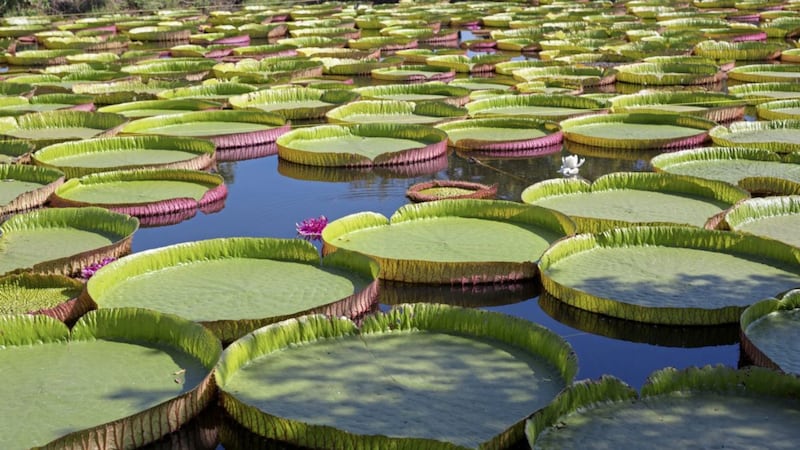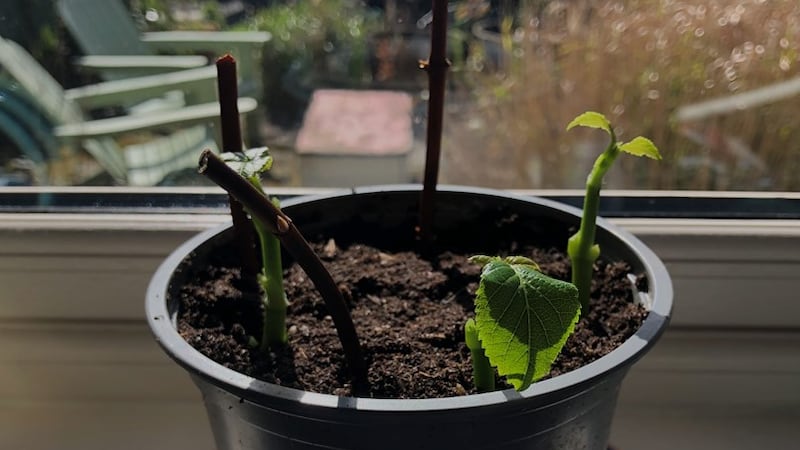THE pick of this year’s reading matter isn’t strictly speaking a gardening book, but surely there isn’t a gardener in Ireland who’s not interested in the Burren. This expansive swathe of limestone pavement in Co Clare is like nowhere else on Earth, a rare and magical place where geology, glacial history, botany, zoology and millennia of cultural history have converged to create a unique landscape of extraordinary natural-history interest.
In this timely and weighty addition to the New Naturalist Library authors David Cabot and Roger Goodwillie examine the ecology of the Burren, delving into natural and human history.
A veritable paradise for naturalists, not only do plants seem to grow on next to nothing, but all the organisms have survived the comings and goings of woodland, the multiple mouths of grazing animals and the passage of several civilisations over 6,000 years.
How they have persisted in such exuberance and diversity is a testament to their past evolution and to the gene complement that they have accumulated over several million years previously, allowing them to adapt to a multitude of different conditions.
The Burren (Collins New Naturalist Library) also looks at the impact of tourism, which has been accelerated and stimulated by the promotion of the Wild Atlantic Way in recent years. As ‘the jewel in the ecological crown of Ireland’, the area must be imaginatively protected and managed for our present and future generations.
Unlike the broad appeal of the above publication, Can Anything Stop Slugs? sounds positively niche; however, the title is something of a misnomer as this book addresses a host of gardening problems. Penned by the Royal Horticultural Society’s horticulturalist Guy Barter, it is an accessible, informative and entertaining grapple with the loves and lifespan of not just the slug but also aphids, squirrels, mosquitoes and other nuisances. Using symptoms as the starting point, it enables the reader to troubleshoot a host of garden problems.
As noted back in April in this column, there were strong echoes of Rachel Carson's classic book Silent Spring in the scenario that greeted Bob and Rosemary Salisbury when they moved from Nottinghamshire in the English Midlands to rural Co Tyrone. But over the following decade, as documented in Bob’s Field of Dreams (Blackstaff), the couple transformed the “rural desert” into a rich, expansive habitat for native flora and fauna.
Field of Dreams celebrates the best of the Irish countryside while also lamenting the worst aspects but always with great affection and humour. Bob and Rosemary recently won the Northern Ireland Environment Agency-sponsored ‘Environmental Initiative of the Year’ category at the Sustainable Ireland Awards.
“The transformation of an area of 14 acres into a haven for biodiversity has been achieved through the vision and perseverance of two people,” said the judges.
Even we gardeners tend to take plants for granted but How Plants Work (Ivy Press) reminds us that without therm we wouldn't be here.
Edited by esteemed botanist Dr Stephen Blackmore, the hefty book's six hand-picked contributors explore the diversity and endurance of the plant kingdom. With generous illustrations and through easily digested prose, they together examine how over 500 million years plants have evolved from primitive algae and lichen to sophisticated, towering structures that can live for centuries.
After delving into the many facets of a plant's existence, How Plants Work concludes by exploring humankind's dependence on plants as food and how we have adapted and refined them so they best suit our needs. It's a book that successfully marries easy-to-grasp biology with a little social science and is a worthwhile appreciation and insight into what keeps us all alive.








